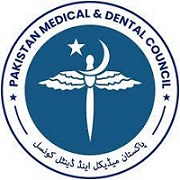THE PREVALENCE OF ABSENCE OF PALMARIS LONGUS MUSCLE IN PUNJABI POPULATION; AN INSTITUTIONAL STUDY
Abstract
Background: Palmaris longus is a weak flexor muscle located in the anterior compartment of the forearm. Its presence in this compartment is frequently varied since it belongs to the superficial group of muscles. Its absence is observed in several communities throughout the world, with prevalence varying from 2.2% to 63.9%, depending on ethnicity, gender, and side of the body (laterality). Because it is a weak flexor of the wrist joint, it is employed in cosmetic and reconstructive surgeries.
Objectives: To investigate the prevalence of Palmaris Longus muscle absence in the Punjabi community when compared to other communities throughout the world.
Methods: After receiving clearance from the FMH College of Medicine and Dentistry's IRB (Intuitional Review Board), cross-sectional research was done to assess the absence of the Palmaris Longus muscle in FMHCM & D students. A total of 447 students were admitted to the study from various classes of MBBS, BDS, and Allied Health Sciences. Among these pupils, 133 were male and 314 were female. All selected candidates were given the usual Schaeffer's test, which was supplemented by the Thompson and Mishra tests.
Results: Palmaris Longus (PL) was absent in 9 candidates, accounting for 2% of the total 447 students. Four of these (0.89%) were men, and five (1.11%) were women. Absence was reported by 3% of male pupils and 1.5% of female students. Individual right and left arm agenesis were also seen. Male students had three right arm absences and one left arm absence out of a total of four. On the other hand, among female candidates, right arm agenesis was detected in all five individuals, whereas left arm agenesis was seen in none.






